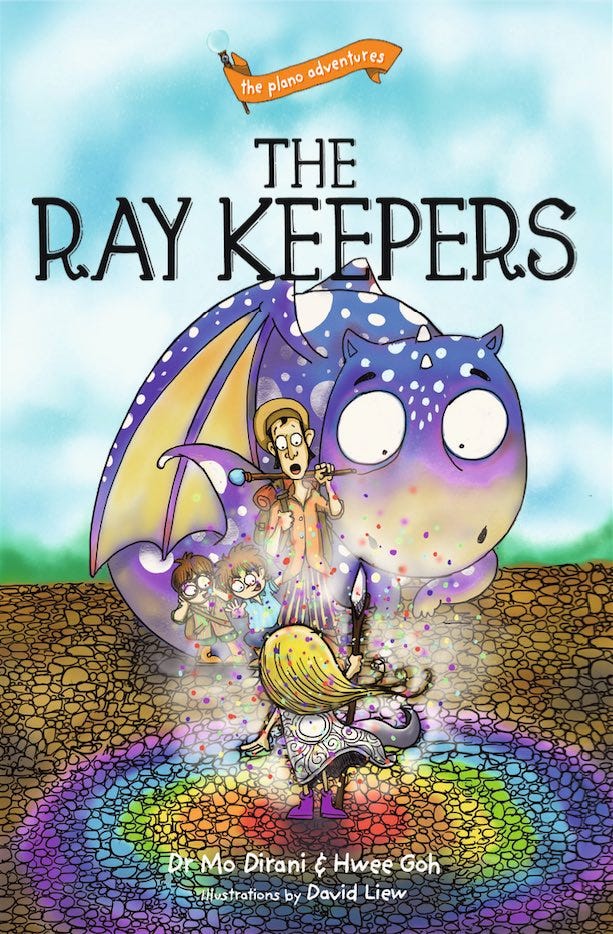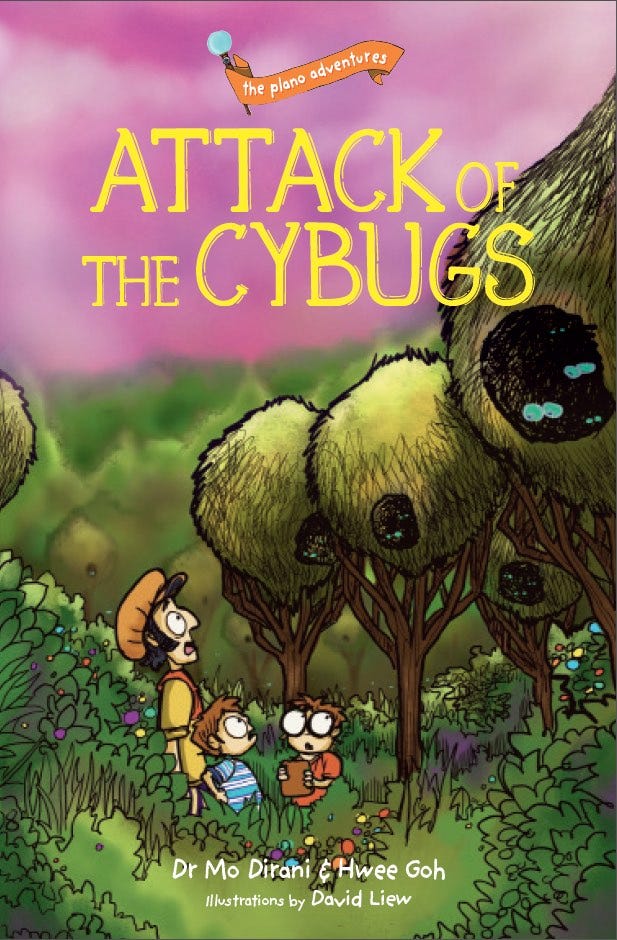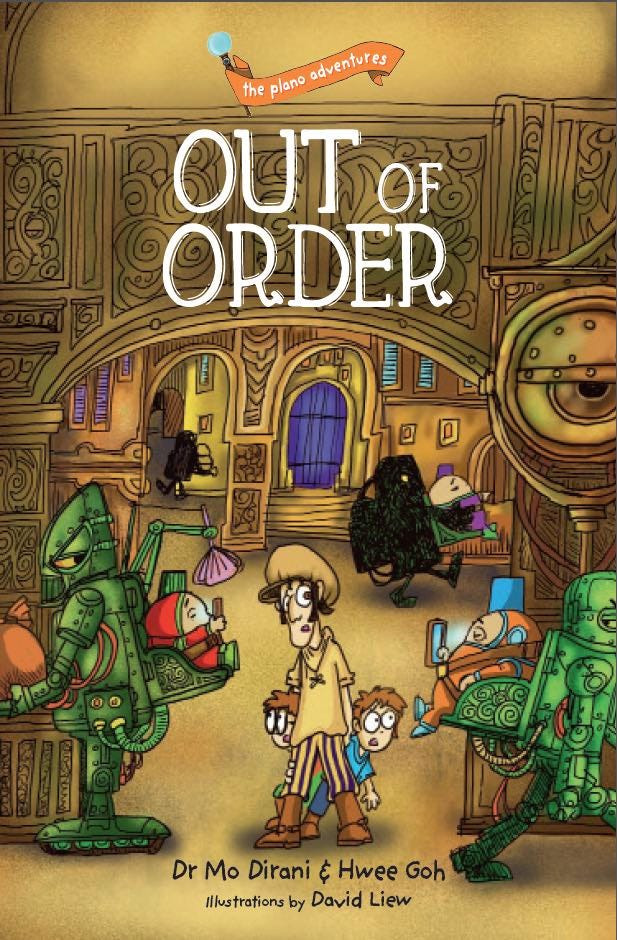What is myopia and we should we care? This fun series has the answer
The people behind The Plano Adventures – Dr Mo Dirani, Hwee Goh and David Liew – are passionate about their stories and their message
We’ve gotten so used to checking, working and playing with our gadgets that it’s become a way of life – so much so that we sometimes forget that these habits can affect our eyesight.
“Myopia (short-sightedness) is one of the most common health problems. It affects an estimated two billion people worldwide,” says Dr Mo Dirani, an eye scientist.
“The number of people with myopia is expected to increase to five billion by 2050, which will be half of the world’s population.”
That’s pretty scary. And these statistics sound even more staggering when we factor in our children.
“A mounting body of research has attributed the increasing prevalence of myopia to the increasing trend of smart-device use in children,” Mo adds.
“The unfortunate reality is that 90 per cent of all cases develop during childhood years. Unless we address this immediately, we will be seeing our clinics and hospitals filled with patients with sight-threatening high myopia. Our collective efforts are necessary in alleviating this public health and economic crisis.”
The threat is real
Mo was reminded of these issues again and again not just because of his work as an eye scientist, but because at that time they were in the process of conceptualising and writing a series of children’s books that would help raise awareness about these problems.
The series is called The Plano Adventures. Mo co-authored the books with writer and editor Hwee Goh, while David Liew provided the illustrations.
Through the five books in the series – Trouble in Murktown, The Ray Keepers, The Never-ending Game, Attack of the Cybugs and Out of Order – the trio developed fun characters and themes that represent the pressing health issues of myopia, device use, and the lack of outdoor activity amongst kids.
The Plano Adventures introduces you to Professor Plano and his twin sidekicks, Zed and Zee, who battle it out with Lord Myopic as he wreaks havoc on the citizens and creatures of magical cities.
So far, Lord Myopic has unleashed a fog, Bottle-Bottle screens that glow, a game that kids have become addicted to, machine dependency, and “bugs” – dilemmas that Professor Plano, Zed and Zee have successfully resolved and triumphed over.
But the battle is still raging
“When it comes to myopia, early detection and ongoing management are important. The sooner we educate children on how to develop responsible device use and increase outdoor activity, the better the chances of reducing the risk of device dependency and its associated risk factors, such as myopia,” Mo explains.
“Healthy and responsible device use, and the balance between technology and device-free activities, are essential to protect children’s vision.”
They hope the books will help.
“I knew that it was important to empower the next generation with the required knowledge to avoid the pitfalls of excessive device usage and establish healthy relationships with emerging technology,” Mo stresses.
“The challenge was to find a way to go about educating children in an engaging manner, which was the essence of the series. Through these publications, we have truly managed to deliver science in a fun and engaging narrative that all children will enjoy.”
Take it from Professor Plano
His adventures in the books can create talking points and bonding experiences with your family. Why not read the series with your young ones and try to learn from them together?
“The underlying call to action in each book in the series is for children to remember and adopt Professor Plano’s ‘Clear Vision Recipe’, which is made up of recommendations on healthy device use and eye care habits developed using the latest scientific literature,” Mo points out.
“Parents should work together with their children in helping them adopt these four golden guidelines for healthy and protected eyes.” Check them out:
#1 Scoops of good distance
“We should use smart devices at a distance of at least 30cm from our eyes,” Mo advises.
#2 Dashes of eye breaks
“It’s recommended to take eye breaks after 30 minutes of using smart devices.”
#3 Heaps of time outdoors
“We should spend at least two to three hours every day outdoors.”
#4 “MyPower”
“We are all in control of and are responsible for our own actions. It is up to us to follow and adopt these recommendations every day,” Mo concludes.
“Parents should remember that it is not the screens that are the problem. Rather, it is the children’s relationship with their screens that needs to be addressed. Empowering them to develop responsible device-use behaviour at a young age will set them up for a lifetime of healthy eyes.”
Speaking of parents
“These issues may be kid-related, but the parents are the first gatekeepers,” David observes.
“Enjoy it together. Talk about it. Give the kids ownership. Discuss ways to deal with these issues together and let the kids find the solutions. If the solutions are forced down kids’ throats, they would have very little personal investment in their actions.”
David, for one, would likely have appreciated having a series like The Plano Adventures while growing up.
“I am personally highly myopic,” he admits. “The Plano Adventures may have helped me if I was a kid now.”
We’ll say it again
Remember, there’s one simple thing you can do that won’t take much money or effort: That is to step outside.
“If there was one easy, employable statistic I could offer, it’s the very definitive scientific fact that going outdoors will prevent or stall myopia,” marvels Hwee.
“It’s almost a magic fact that gives you not just ‘Clear Vision’, but a symbolic ‘Clear Vision’ for a need to break away from excessive device use and soak up some sun!”
The Plano Adventures may be for kids, but the message of the series and all of the above can apply to adults too.
So go for a walk, schedule an entertaining activity, meet a friend, try a sport, or contribute your time to a good cause. These’ll help you look after your health and eyesight, as well as lift your mood.
Why not bring along and share your The Plano Adventures books while you’re at it?(Don’t forget Attack of the Cybugs and Out of Order.) ⬇️
One last thing: Time is precious
And it’s something you can never get back – so why not encourage yourself and inspire your loved ones to spend it on meaningful experiences instead?
“Insights from our latest scientific development, The Plano Time Machine, on the screen time of young people worldwide is absolutely alarming and is something that we want to address,” Mo declares.
“A subgroup analysis of our cohort teenagers aged 13 to 19 revealed that in countries such as India, Bangladesh, Singapore and Malaysia, the amount of time spent on smart devices is between six and nine hours per day, and this does not even factor in the possibility of individuals’ tendency to underestimate their screen time.
“Over a lifetime, this accumulates to tens of years spent staring at tiny screens. For example, here in Singapore, teens on average spend close to 15 years (eight hours a day), or 33 per cent of their productive waking years – assuming there’s seven to eight hours of sleep per day – on their devices.”
And that’s not all. (Yes, there’s more, and it’s best we find out.)
“Our findings are dauntingly consistent with existing research. One study found that American teenagers spend more than seven hours a day on their smart devices,” Mo relates.
“The age at which smart devices are being used is also getting younger – as many as 97 per cent of children aged four, and three-quarters of children as young as a year old, use devices every day. Unfortunately, the increasing rate of integration of mobile technology into almost every aspect of human life will continue to perpetuate these worrying trends.”
The good news? We can act now. Go to The Plano Time Machine and @theplanoadventures for tips and the latest information.










